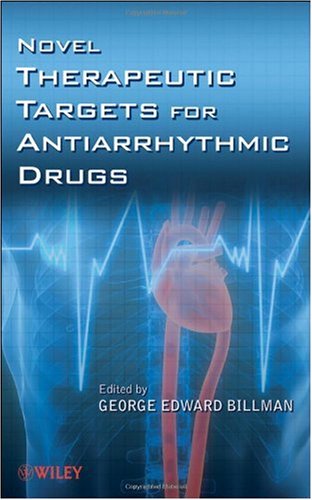

Most ebook files are in PDF format, so you can easily read them using various software such as Foxit Reader or directly on the Google Chrome browser.
Some ebook files are released by publishers in other formats such as .awz, .mobi, .epub, .fb2, etc. You may need to install specific software to read these formats on mobile/PC, such as Calibre.
Please read the tutorial at this link. https://ebooknice.com/page/post?id=faq
We offer FREE conversion to the popular formats you request; however, this may take some time. Therefore, right after payment, please email us, and we will try to provide the service as quickly as possible.
For some exceptional file formats or broken links (if any), please refrain from opening any disputes. Instead, email us first, and we will try to assist within a maximum of 6 hours.
EbookNice Team

Status:
Available4.7
17 reviewsCardiac arrhythmias of ventricular origin are responsible for the deaths of nearly half a million Americans each year while atrial fibrillation accounts for about 2.3 million cases per year, a rate that is projected to increase 2.5 fold over the next half century. Effectively managing these cardiac rhythm disorders remains a major challenge for both caregivers and the pharmaceutical industry. Filling a gap in the current literature, Novel Therapeutic Targets for Antiarrhythmic Drugs presents the latest treatments for cardiac arrhythmias alongside comprehensive presentations of basic cardiac physiology and pharmacology.
Written by leading experts in their research areas, this invaluable resource offers both practitioners and researchers a one-stop guide that brings together previously dispersed information. The text consists of four sections:
Section One comprehensively reviews basic cardiac electrophysiology, the mechanisms responsible for arrhythmias in the setting of ischemia, and basic pharmacology of antiarrhythmic drugs. Section Two addresses safety pharmacology, including the concept of "repolarization reserve," safety challenges, and regulatory issues for the development of novel antiarrhythmic drugs. Section Three describes several novel pharmacological targets for antiarrhythmic drugs, including both ion channel and non-ion channel targets. Section Four describes promising non-pharmacological antiarrhythmic interventions including selective cardiac neural disruption or nerve stimulation, aerobic exercise training, and diet (omega-3 fatty acids).
Offering an unparalleled look at the current state and future direction of cardiac arrhythmia treatment, Novel Therapeutic Targets for Antiarrhythmic Drugs provides an important resource to advanced students, working researchers, and busy professionals alike.